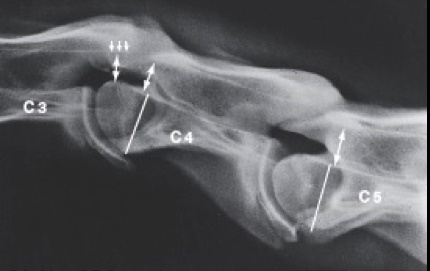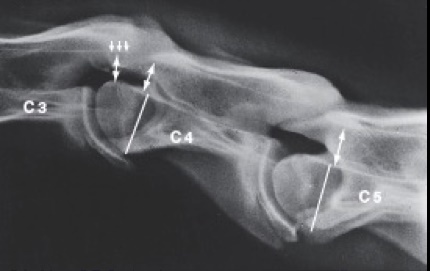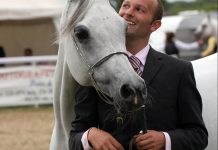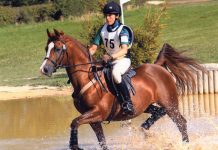Every trainer works to achieve the best performance from the horses they work with, using a wide variety of techniques, aids, and goals. Some trainers are more diverse or vary their training methods depending on the individual while others have a successful formula they can apply to nearly all horses they work with. And high-level performance in the show ring, dressage arena, jumping course or endurance ride, is their ultimate goal. So how do you find the best training formula for your horse? Let’s look at a current and hotly discussed training topic.
In recent years, there has been much discussion of the use of ‘rollkur’ in dressage training. I find this discussion ironic in the sense that dressage has always purported to be the ultimate in training for balance and self-carriage, yet has increasingly adopted a neck position seen most commonly in the show-jumping warm-up maintained by draw-reins and a set of spurs.
Before you think I am getting on a soap-box as an angry rollkur-hater, I can assure you that there have been a few times when the excessively flexed head and neck position achieved through the application of draw-reins has saved me from a long gallop over the moor and possible death as my own quirky Arabian mare has a tendency to high speeds without any self-preservation. There are times when the calm-balanced, self-carriage situation is clearly not happening, and the rider may resort to functional rather than elegant riding to survive. But how often is this scary situation a reality, and what really stops our horses from being able to perform as we might want them to? A look inside can be very revealing and inform us as to why our horses may not be able to achieve all that we want.
Horses have seven neck (cervical) vertebrae, 18 thoracic (upper to mid-back) vertebrae, six lumbar (lower back) vertebrae, and five sacral (end of back) vertebrae plus caudal (tail) vertebrae. According to the textbooks, this is the case for every horse, and they are all symmetrically designed throughout the body enabling equal flexion both to the sides (lateral) and upwards or downwards (flexion or extension).
Of course, reality is different. While most horses do have seven neck vertebrae, we also know that Arabian horses have one less vertebrae through the thoracic or lumbar region. Depending on the source you read, it may be the last thoracic or one of the lumbar vertebrae. This may result in one less pair of ribs if the thoracic vertebrae are affected. However, we also now know that 61% of Thoroughbreds also do not have the normal stated skeletal formula, and at least a third have asymmetrical joint surfaces between left side and right side. This means that flexibility between the left and right sides can differ and will always be different, no matter how much schooling or activated stretching you use.
Recent studies have also identified transitional vertebrae, which are spinal bones with features of more than one type of vertebrae. For example, I have seen the last thoracic vertebrae of one dead and dissected pony with a rib attached to one side and the lateral process, the part that sticks out of the side of the vertebrae, of a lumbar vertebrae on the other side. Since then, I have seen the same in live horses where it is possible to see a rib on one side and not the other when viewed from above and behind the horse. Again, this will affect lateral (sideways) flexibility in these horses, making them stiffer towards the side with the extra rib.
Transitional vertebrae are also commonly seen in the late lumbar spine going towards the sacral region, and there have been questions raised over whether these affect the upward flexion of the spine between these two areas of the spine, under the point of croup when you look at your horse from the side. The lumbosacral joint allows up to 40° of flexion, but if limited, this affects the horses ability to engage the hindquarters to collect, jump, or gallop at the highest speeds.
As a spinal manipulation therapist, I find these research studies interesting. To a certain extent, the musculature of the horse does dictate how well the horse can accommodate those limitations in the skeletal system underneath, but ultimately, spinal flexibility and strength can only be improved where it is designed to achieve mobility in the first place. Sometimes, we have to accept that our horses and ponies can only perform so well, and asking them to do more is not only counterproductive, and possibly cruel. After all, if we were all being asked to do gymnastics, we would soon realise that most of us have limitations that no amount of training can change.












